Believe it or not, not all salt is the same. Kosher salt, table salt, and sea salt all have various uses and can drastically change the flavor of a recipe! Stick around to learn how to use these common types of salt, and find a list of less common varieties to elevate your cooking.
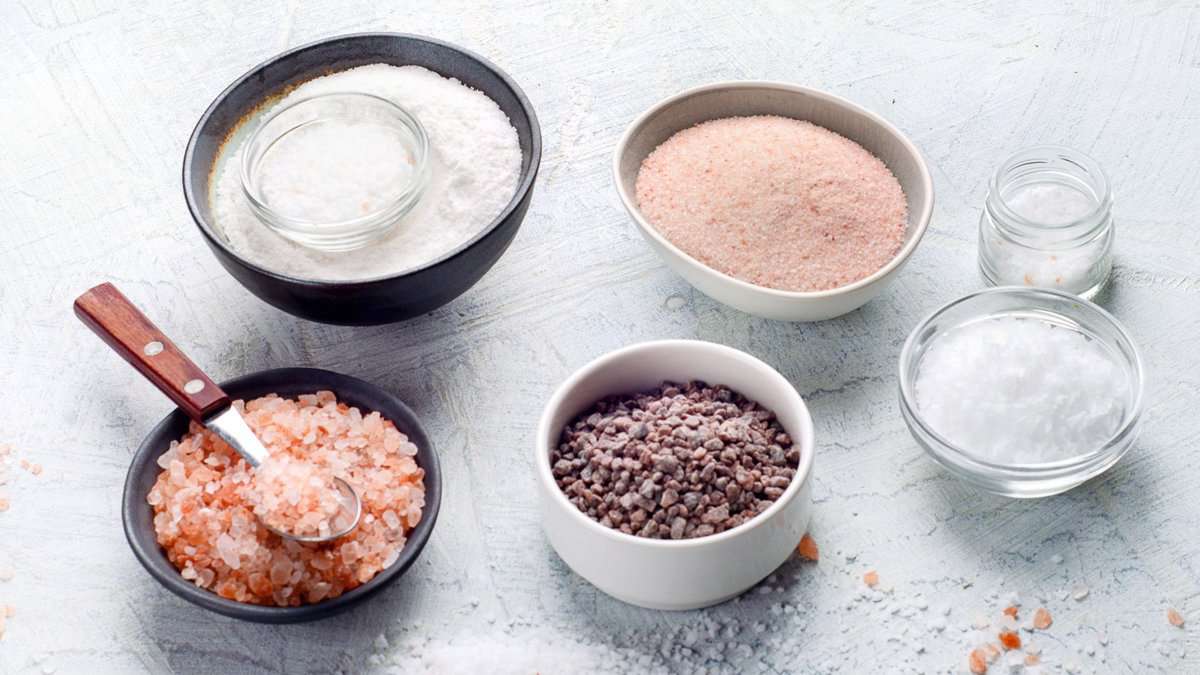
Pin this recipe now to save it for later
Pin RecipeSalt is the most important seasoning you can have in your kitchen. It helps balance the flavors of your favorite recipes and brings out the best in each ingredient.
But which salt is best to use when? Don’t worry if you don’t know the answer. There are many layers to it!
Many avid cooks keep kosher, table, and sea salt on hand in their kitchen for all their different uses. Of course, you can use these salts interchangeably. However, it makes a huge difference in your cooking if you know which type of salt is best to use in any given circumstance!

How Is Salt Made?
All types of salt are made from evaporated saltwater, whether from the sea or an artificial brine.
Even salt that is mined on land was once sea salt that can be traced back to an evaporating shallow sea!
While some salt is made from seawater, the majority of salt is mined. Once collected, it is run through manufacturing processes for treatment before being dried for packaging.
Refined vs. Unrefined Salt
Refined salt is created through a quick evaporation process that results in uniform, small, and dense crystals. Meanwhile, unrefined salt is created using a longer evaporation process (such as being naturally dried by the sun). As a result, unrefined salt is packaged as uneven, hollow, light flakes.
Kosher Salt vs. Table Salt vs. Sea Salt
All salt has the same origin, chemically speaking, at least. However, after that, things start to break down. Each kind of salt will impact what you are cooking or baking differently.
The size of the grain, the coarseness, and the amount will all affect the final taste of your recipe. So, it’s important to choose carefully!
1. Kosher Salt
Kosher salt is what you normally buy in large quantities. It is available as both a large and coarse grain. The crystal size in kosher salt can vary from brand to brand. So, it is important to note which size you have in your kitchen in order to add the right amount to your food.
Kosher salt will be your most versatile type of salt to keep on hand. Kosher salt is the go-to for seasoning meats, brines, and spice rubs. You’ll also want to use kosher salt for seasoning pasta water, marinades, pickling, or when boiling vegetables in water. You can even use this type of salt to rim margarita glasses!
2. Table Salt
The most common type of salt is table salt. Table salt is most likely what you think of when you think of salt and is what you’ll find in the salt shakers at restaurants.
It’s very fine and powerful in flavor. You do not need large quantities of table salt for it to make a strong impact. This kind of salt is a fan favorite for baking because the crystals are fine and dissolve easily. As a result, they allow for even distribution in baked goods such as doughs and batters, making all your recipes tasty.
Table salt is also great to use as a finishing salt for meals and keeping on the table when eating — hence the name.
3. Sea Salt
Sea salt has become popular over the past few years. The large, chunky flakes provide a burst of flavor, making them a great addition to a variety of recipes.
As you might guess, sea salt is salt from the sea. It is the salt that is left over when salt water is processed or evaporated. Because of its natural quality, sea salt provides a lot of nutrients like iron, potassium, magnesium, and calcium.
It also packs a punch of flavor on top of any dish! Sea salt is a great addition to meats, fish, salads, and roasted vegetables. You can even use it on sweet dishes like chocolate chip cookies or brownies. While you can mix it into recipes, sea salt is typically used to finish off food and is sprinkled over meals at the end.
Other Types Of Salt
Though kosher salt, table salt, and sea salt are the most popular types of salt available, there are many options on the market! Here are an additional ten types of salt that you can use in your cooking, seasoning, and for pickling salt.
4. Fleur De Sel
Fleur De Sel is French for “Flower of the Sea” and is made by harvesting salt from the tops of salt ponds. While its origin is on the coast of France in Brittany, there are replications of it throughout North America.
Fleur De Sel requires an intricate harvesting process to obtain. As a result, this precious salt can be pretty pricey! Use it to finish dishes just before serving.
5. Celtic Sea Salt
Celtic sea salt is also known as Sel Gris or “grey salt”. French in origin, Celtic sea salt is found in the clay of inland salt flats. It’s said that the mineral composition of this particular salt is said to lower blood pressure.
Celtic sea salt is chunky, making it ideal for seasoning meats and pickling.
6. Flake Salt
Flake salt is a type of salt made from grinding salt crystals into small pieces, which are then flaked. The process is somewhat complex and can differ from manufacturer to manufacturer.
Flake salt is great for seasoning food while it is cooking and can add a slight crunchiness to the dish.
7. Pink Salt
Pink salt, also commonly known as Himalayan salt, comes from rock crystals that are extracted in locations close to the Himalayas. This salt is known for its pink hue and is a good source of iron and zinc.
Pink salt is saltier in flavor than table salt, which is good to keep in mind as you’ll only need a small amount. It’s great to use in a variety of recipes including sauces and marinades. It can even be used as decoration on a plate!
8. Black Salt
Black salt, also known as Kala Namak, is salt harvested from volcanic rock salt in the Himalayas. This salt is rich in iron, magnesium, and calcium and has quite a strong flavor and smell.
Use it in small quantities for recipes like curries, spicy dishes, or meals that require a punch of flavor.
9. Red Salt
Red Salt, or Alaea salt, is a Hawaiian salt made from ground red volcanic and is said to consist of over 80 minerals!
Its mild saltiness and delicate flavor make red salt the perfect choice for seasoning and preserving food like meat and fish. It also works well for sautéeing and roasting.
10. Black Lava Salt
Black lava salt comes from Hawaii and Cyprus. It combines with activated charcoal from those regions, giving it a distinct dark color. The added charcoal is great as a cleanser for the body and digestive system.
Drizzle black lava salt over foods for flavoring and decoration!
11. Smoked Salt
Smoked salt is made by cold smoking salt with wood for up to 2 weeks. The type of wood used to smoke the salt as well as the length of smoking time impacts the color and flavor of the salt.
This salt is great for adding smoky flavor to dishes such as chili or barbecue sauce.
12. Brining Salt
Brining salt is a type of salt that is added to water, creating a distinct flavor and tenderizing meat. Kosher salt, sea salt, and pink salt are all examples of brining salts.
13. Flavored Salt
Flavored salt is merely the combination of a type of salt (usually flaky salt) with dry spices and/or herbs. There are many varieties, and they’re all great for adding extra flavor to dishes and seasoning meat, poultry, and fish.
Quick Tip
To salvage wet and clumpy salt, mix a few grains (1-8 grams) of uncooked rice into the salt. Mix the rice through the container of salt with a spoon, or shake the salt shaker to distribute the rice grains. The rice grains will help to absorb excess moisture!
How to Store Salt
Pure salt doesn’t expire, although it can become clumpy or take on an unpleasant flavor if stored incorrectly.
Salt naturally absorbs water and moisture. So, it’s best to keep it away from humid areas of the kitchen and store it in an airtight container or jar.
All types of salt should ideally be stored in a cool and dark environment, away from areas that might have strong odors.
FAQs
The 4 most common types of salt include kosher salt, table salt, sea salt, and coarse salt.
Kosher salt seems to be the preferred salt to cook with because of its larger flakes and milder saltiness when compared to table salt.
Even though there are so many different types of salt to choose from, there is not one that is better for you than others. They all contain about the same amount of sodium. So, it depends on how much salt you are consuming to truly impact your body and nutrition.
You are probably already buying iodized salt without even knowing it. Today, most salt is iodized unless specifically noted. Iodine was first added to salt in the 1920s to help with iodine deficiency.
The addition of iodine does not change the taste or the color of the salt, and in fact, has benefits of its own. Consuming iodine can help boost thyroid function, maintain a stable weight, and promote heart health. Non-iodized salt is widely available for purchase in grocery stores as well.
Kosher salt, table salt, and sea salt are interchangeable. However, the amount needed to produce the same flavor from each type varies. Since the grain size can differ from salt to salt, the measurements will not be 1:1.
The same goes for different brands of kosher salt. Popular kosher salt brands like Diamond Crystal and Morton have different grain sizes and will impact recipes differently. Diamond Crystal tends to have larger grains, so less will be needed in a recipe or while finishing a dish.
More Helpful Kitchen Tips
Kitchen Tips
Miracle Whip vs. Mayo (What’s the difference?)
Kitchen Tips
When to Use Salted vs. Unsalted Butter
Kitchen Tips
How to Ripen Bananas Quickly
Kitchen Tips
Baking Dish and Casserole Conversion Guide
Kitchen Tips
4 Super Simple Ways to Keep Apples from Browning
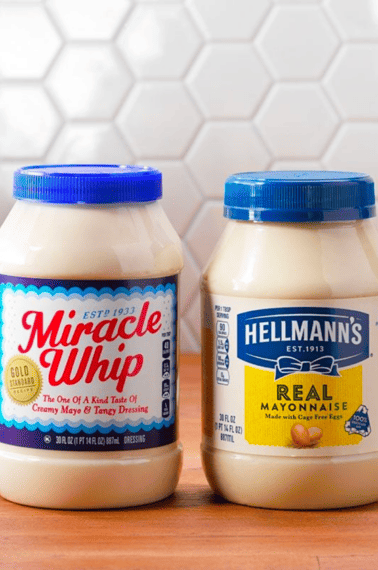
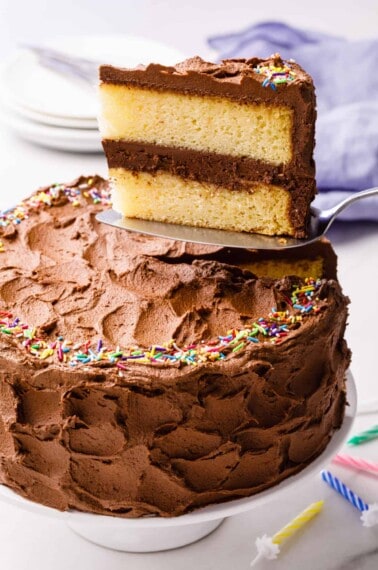
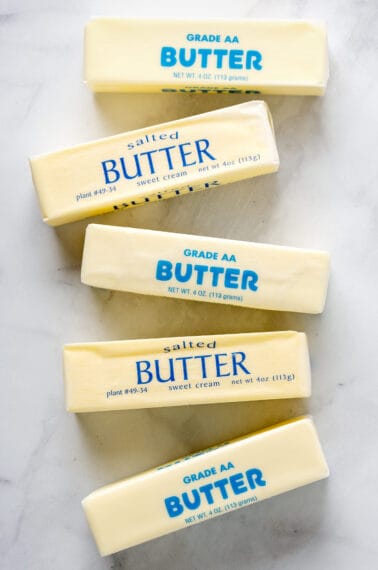
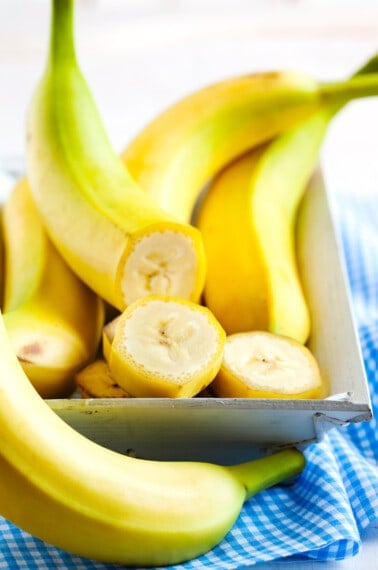
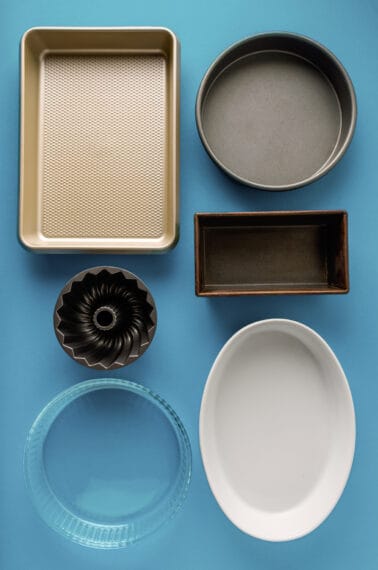










I enjoyed your article and found it very informative. However, you duplicated your #6. Flake Salt description in your #7. Pink Salt. I believe Pink Salt is comparable to Himalayan salt.
Thank you for catching that, Ken! We updated the post. 😊